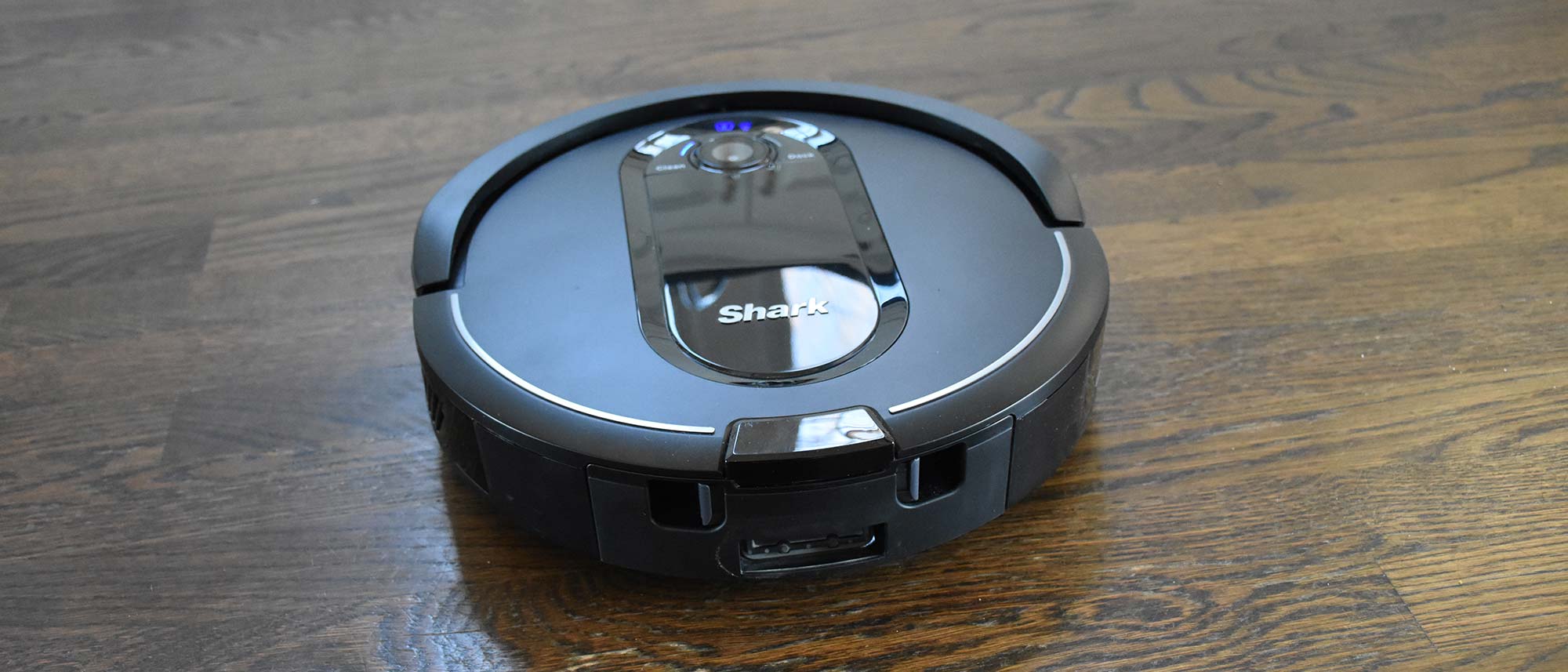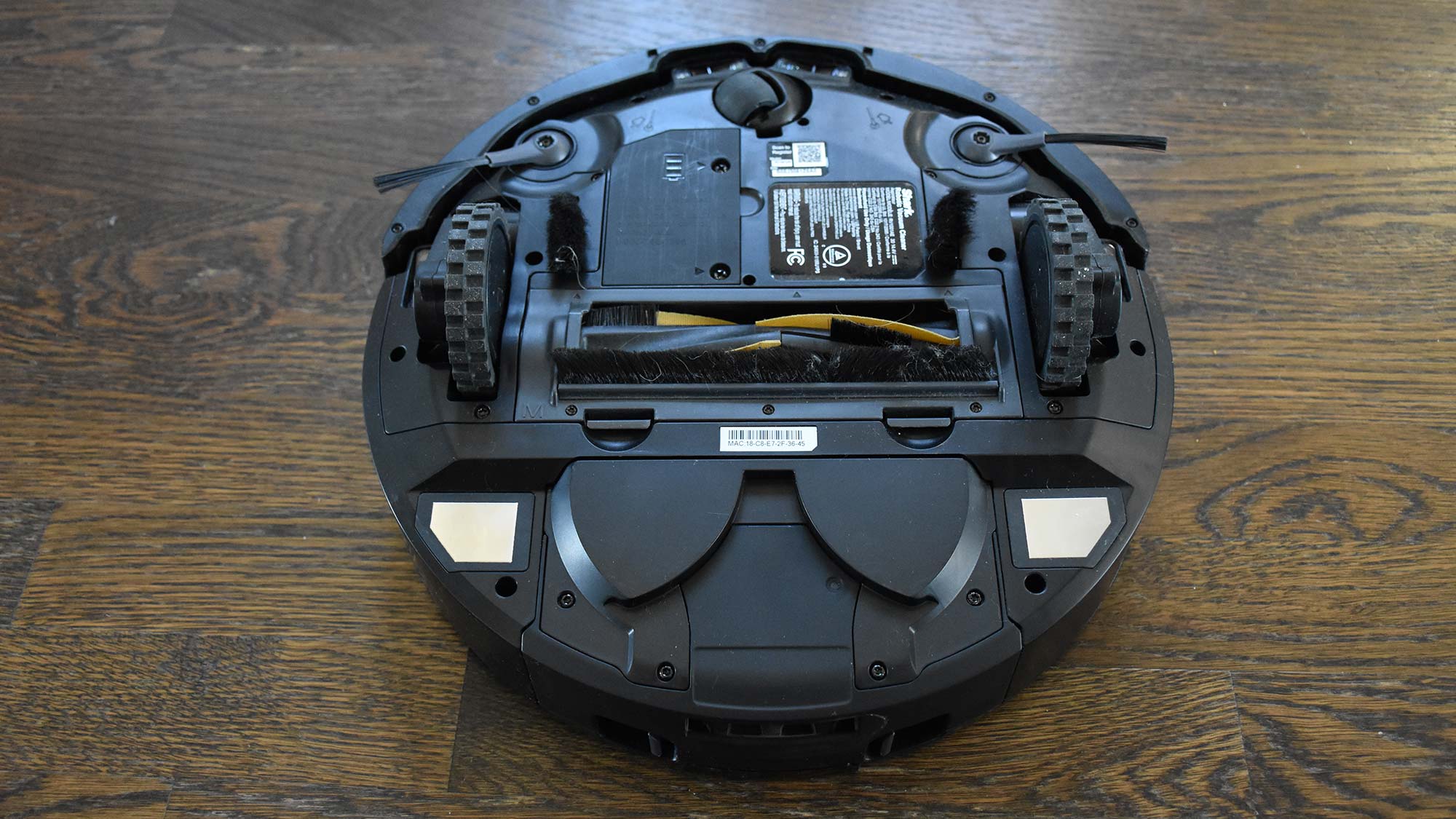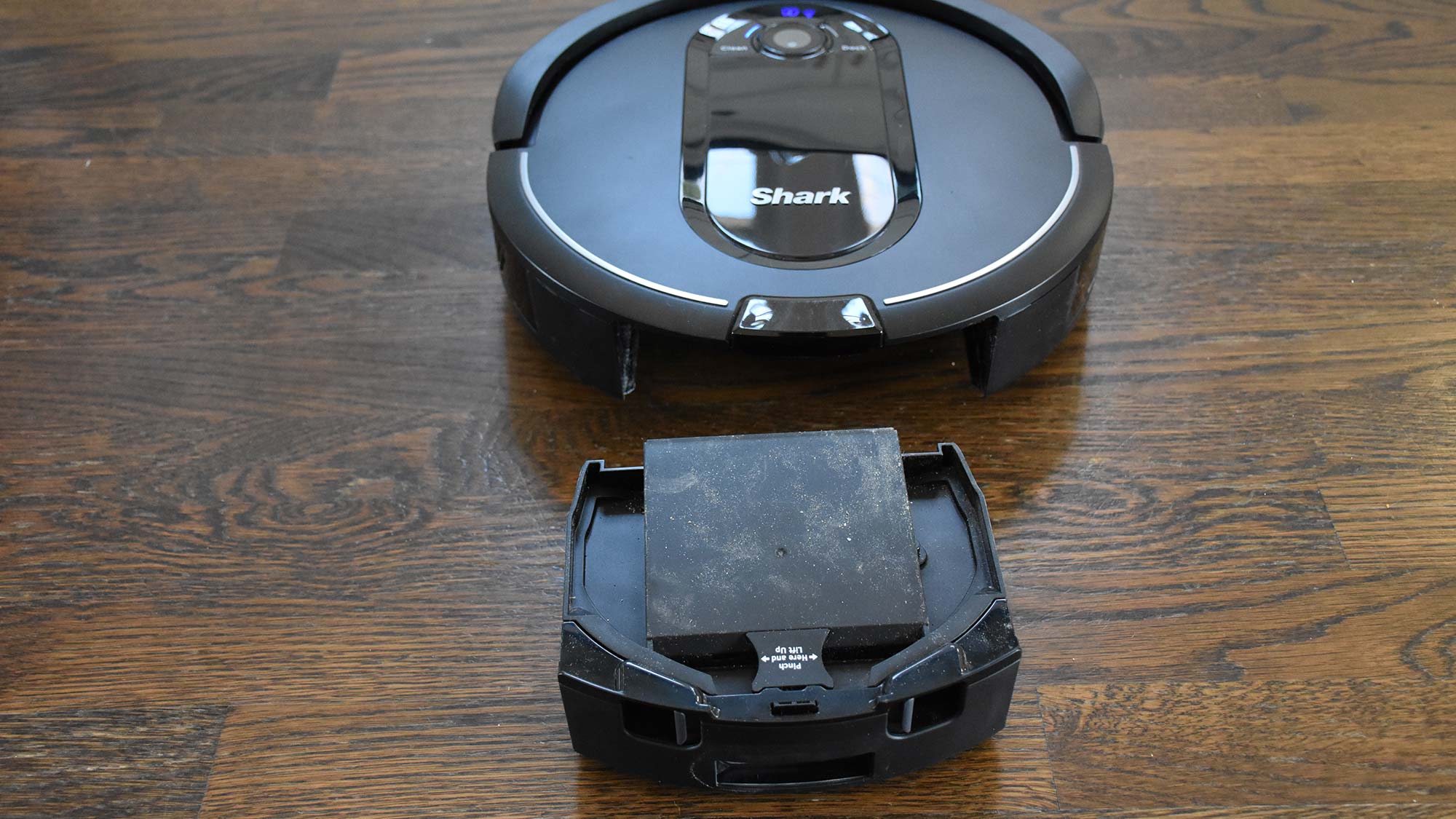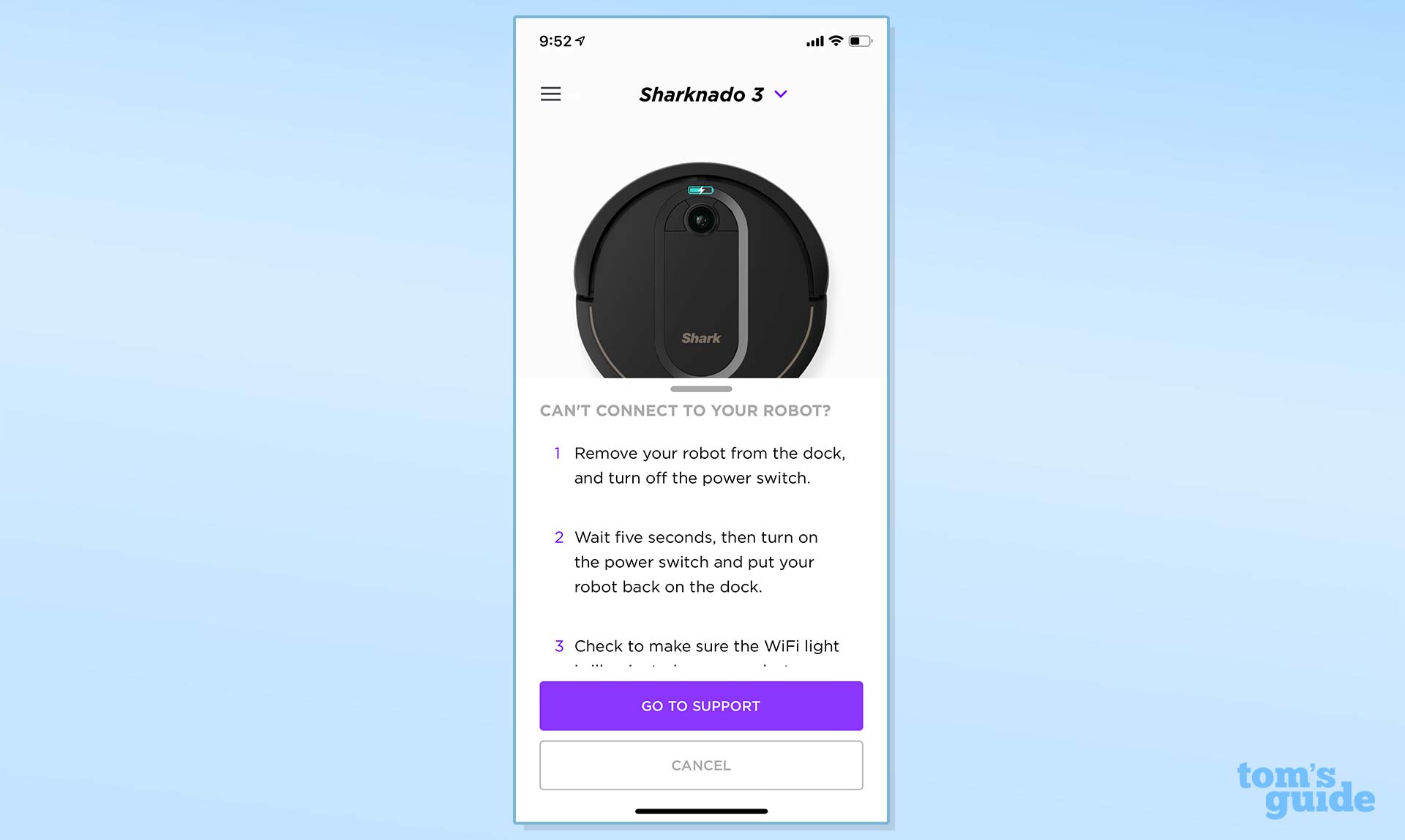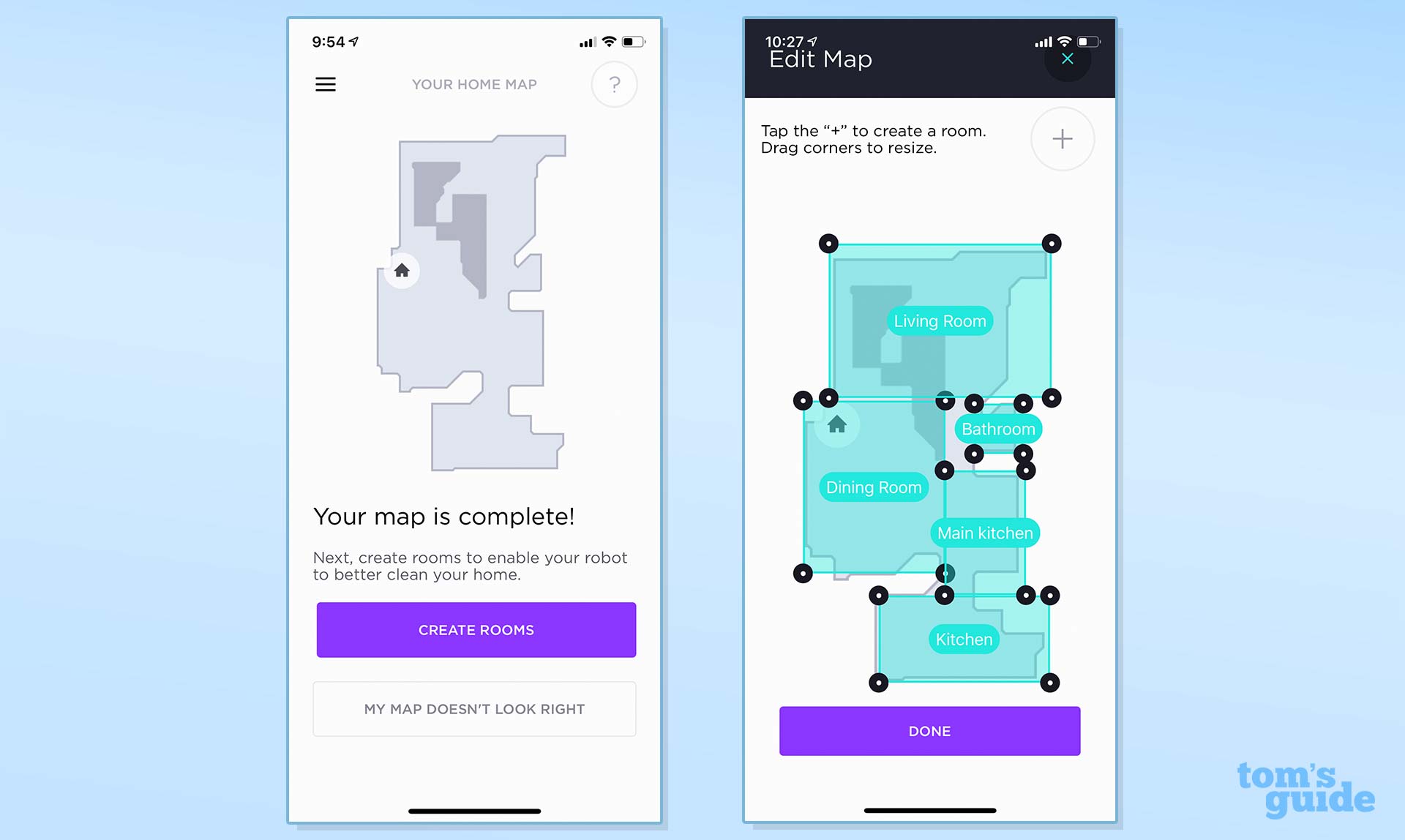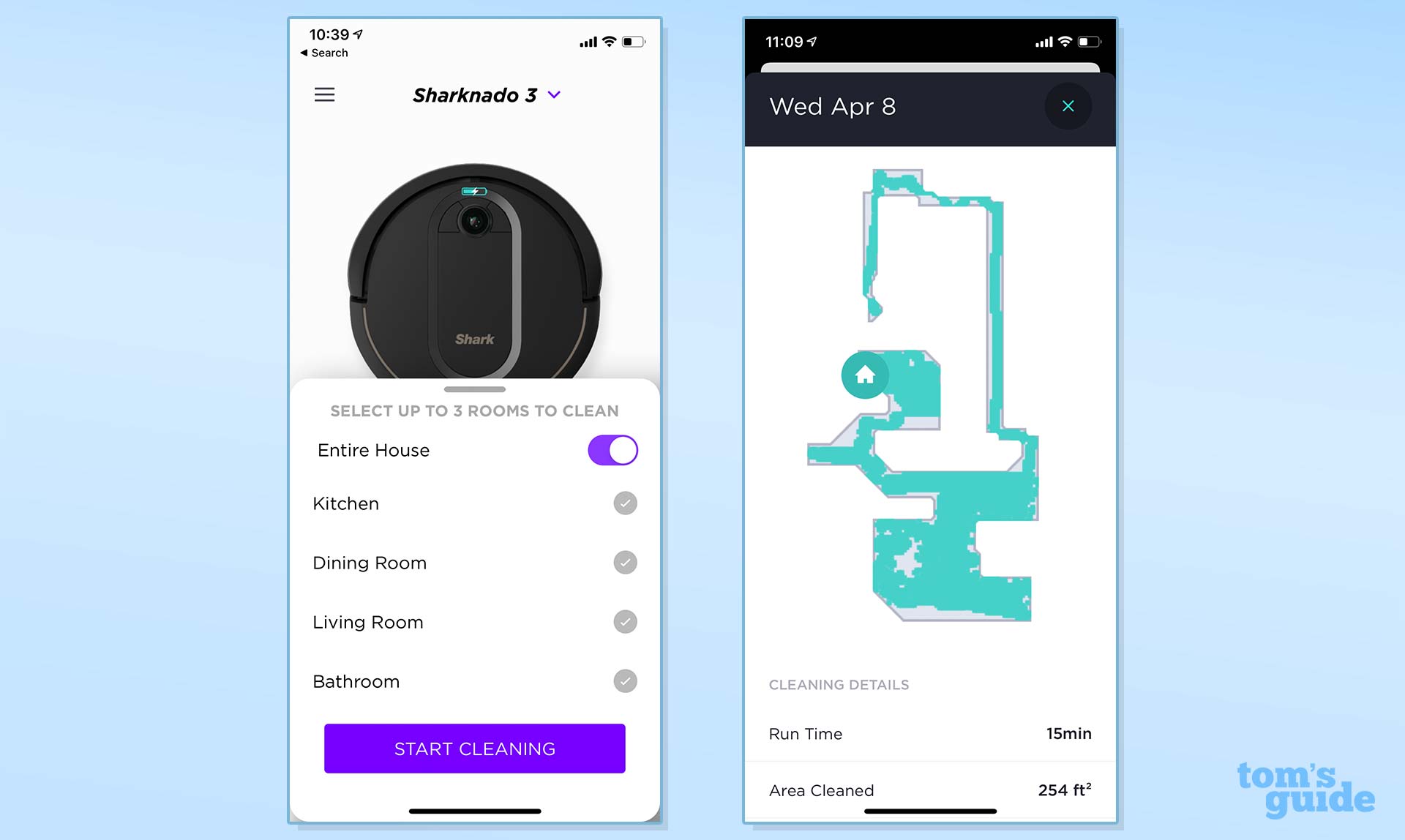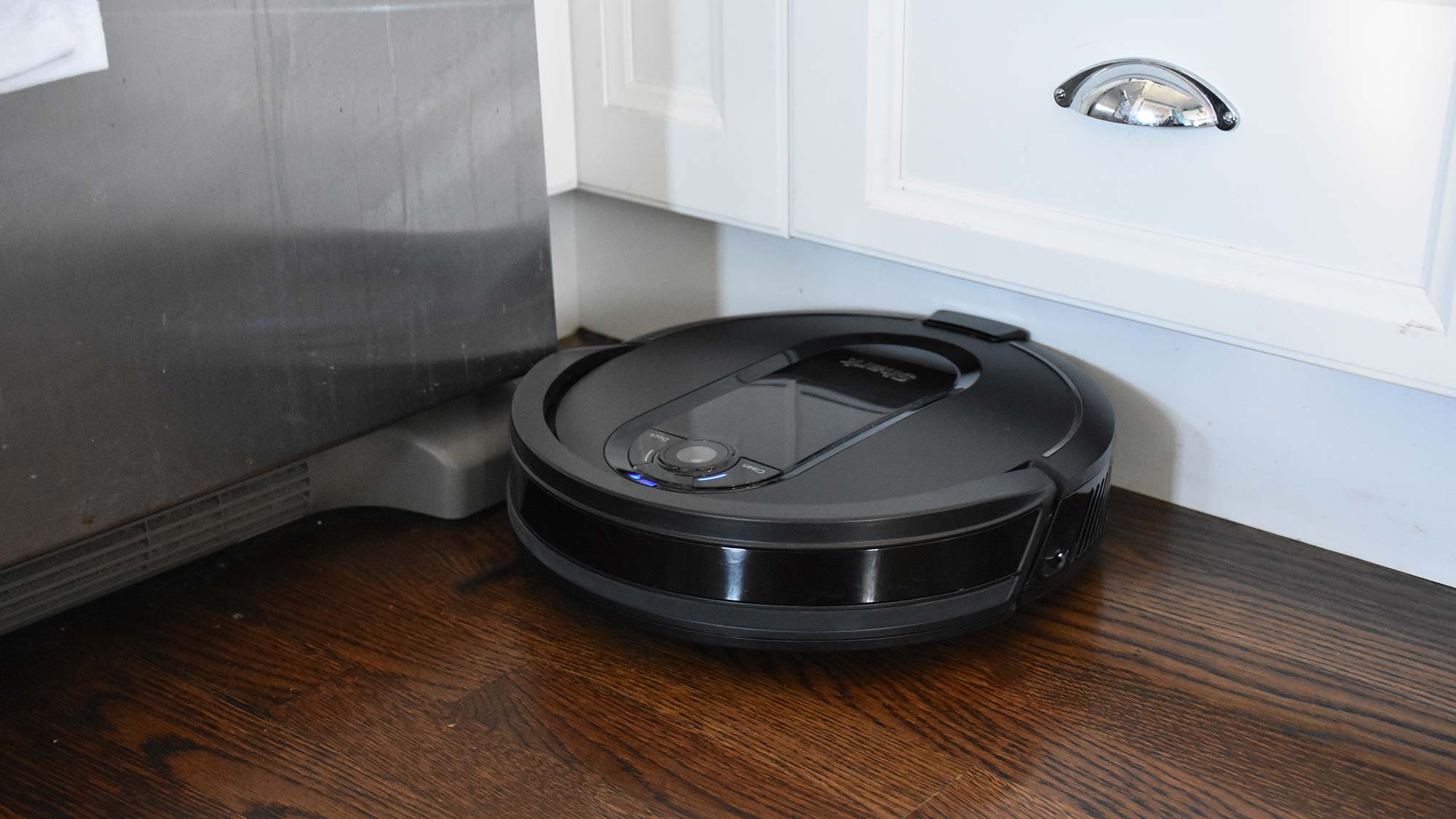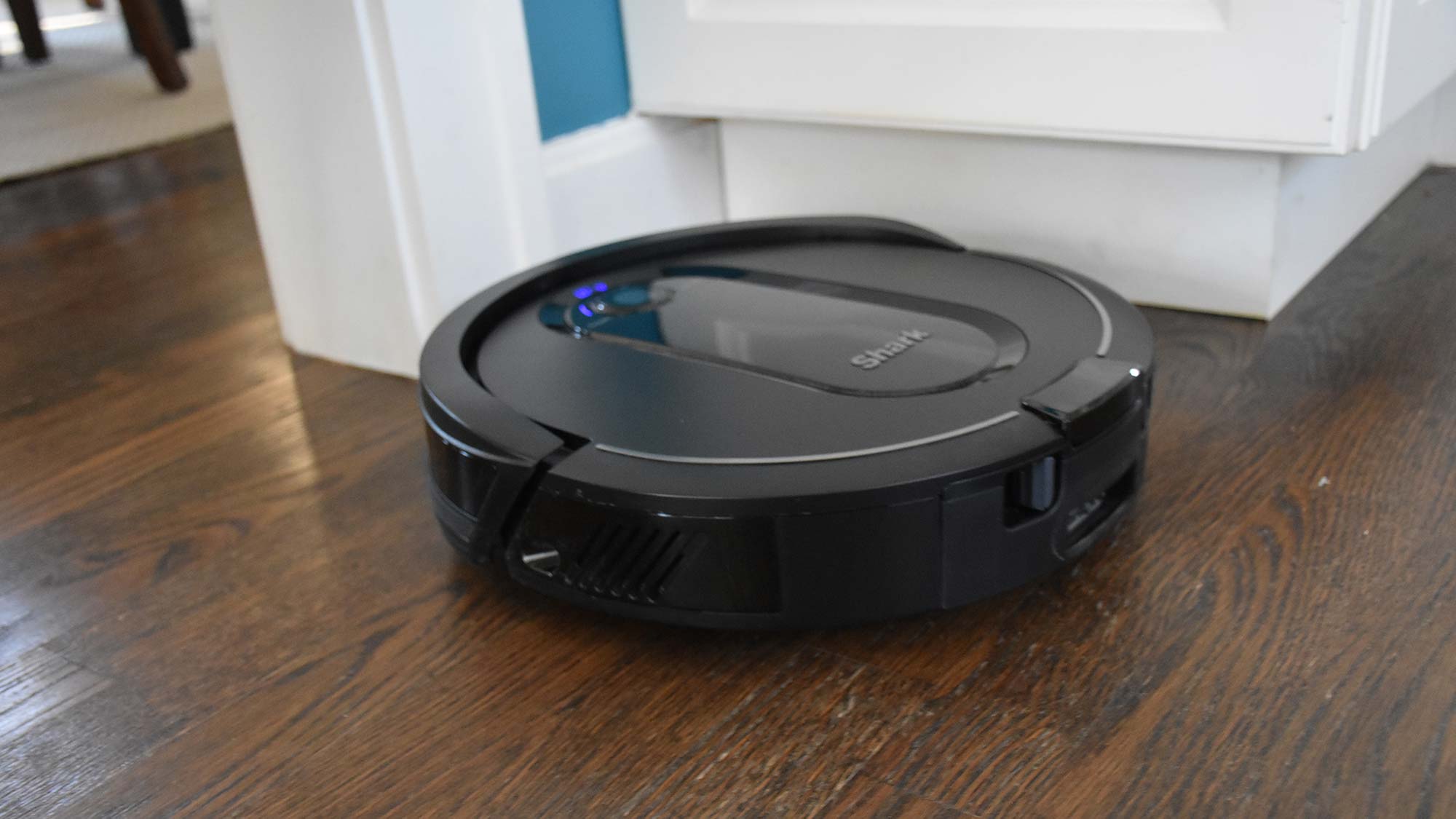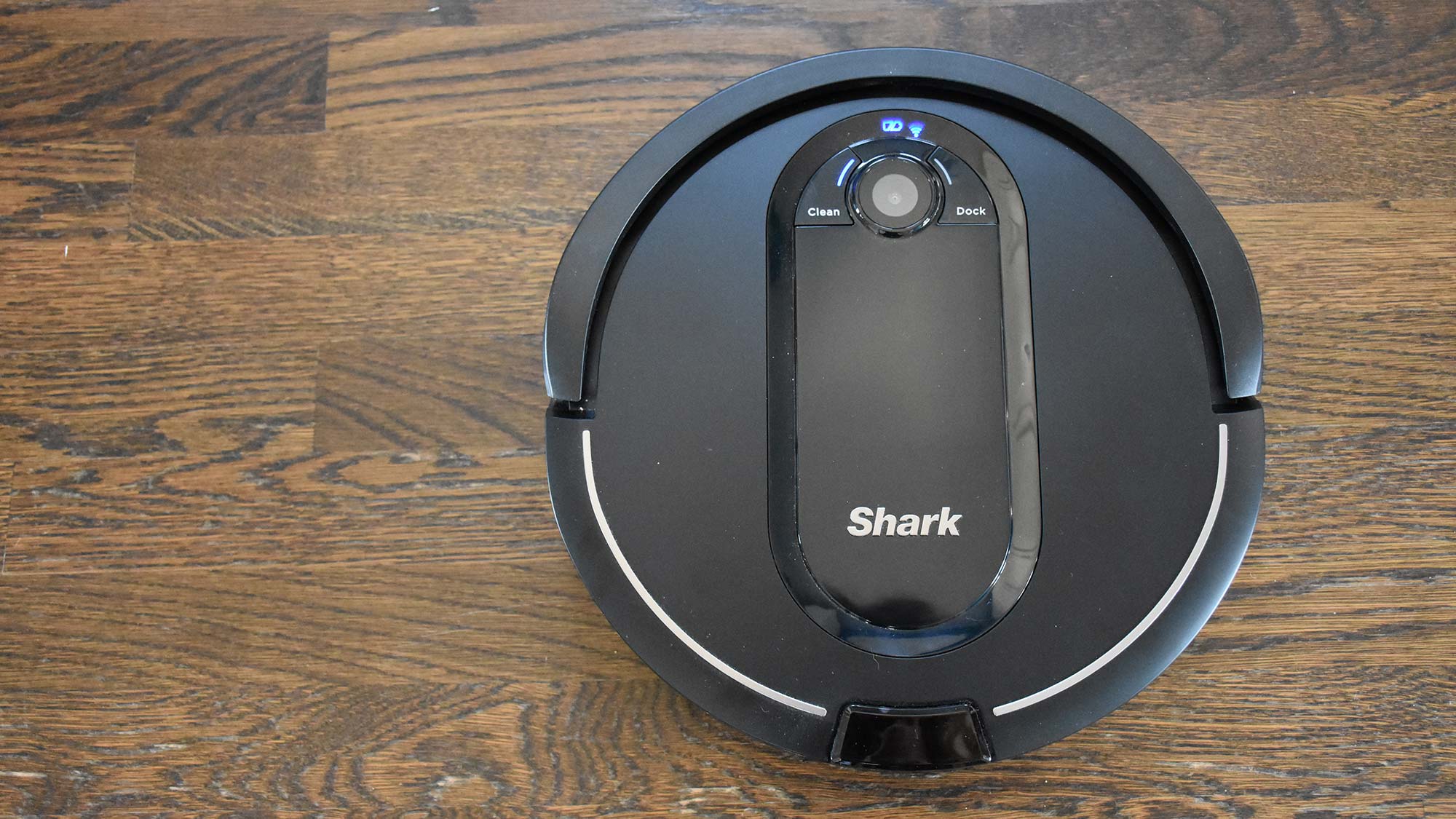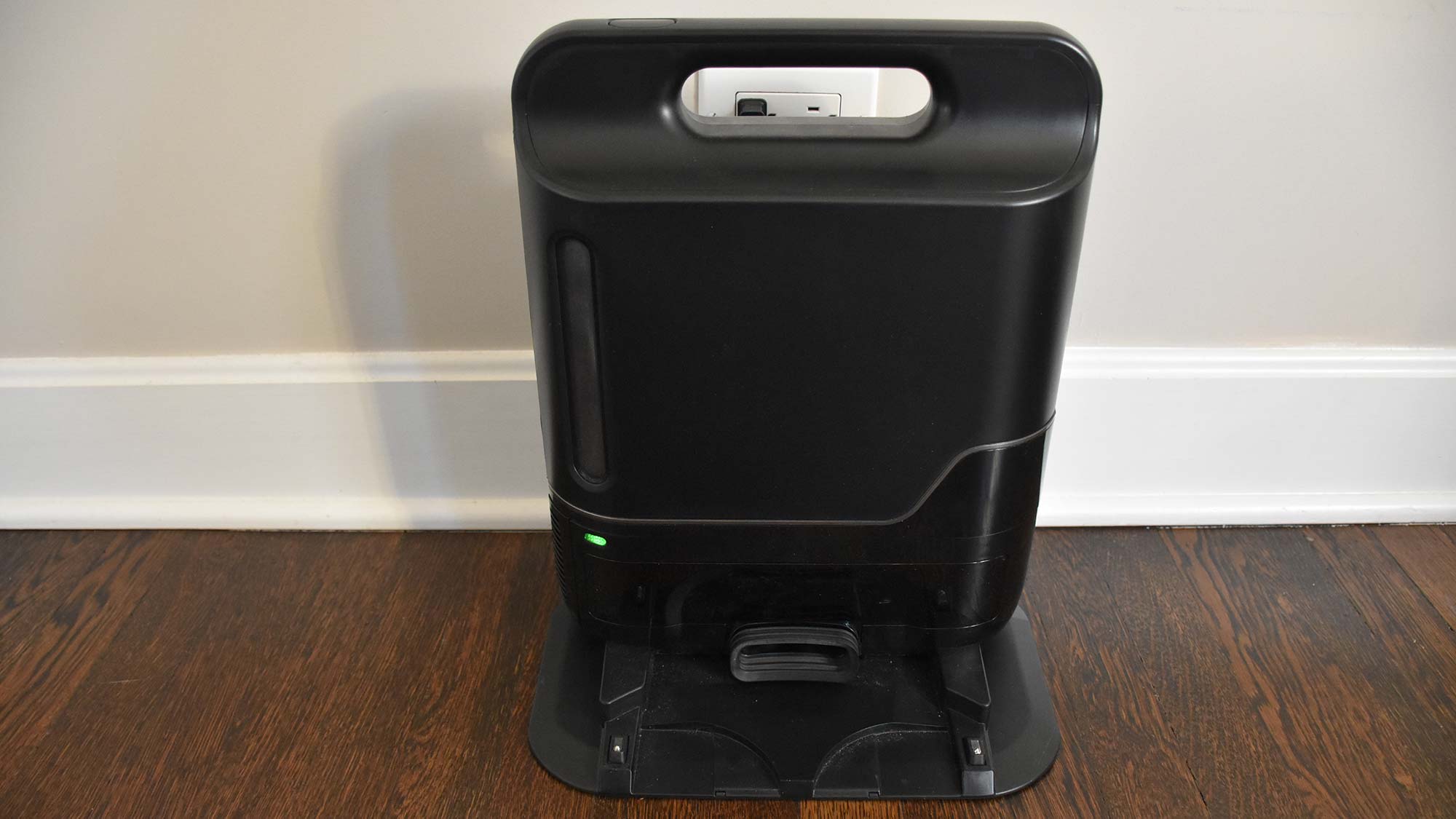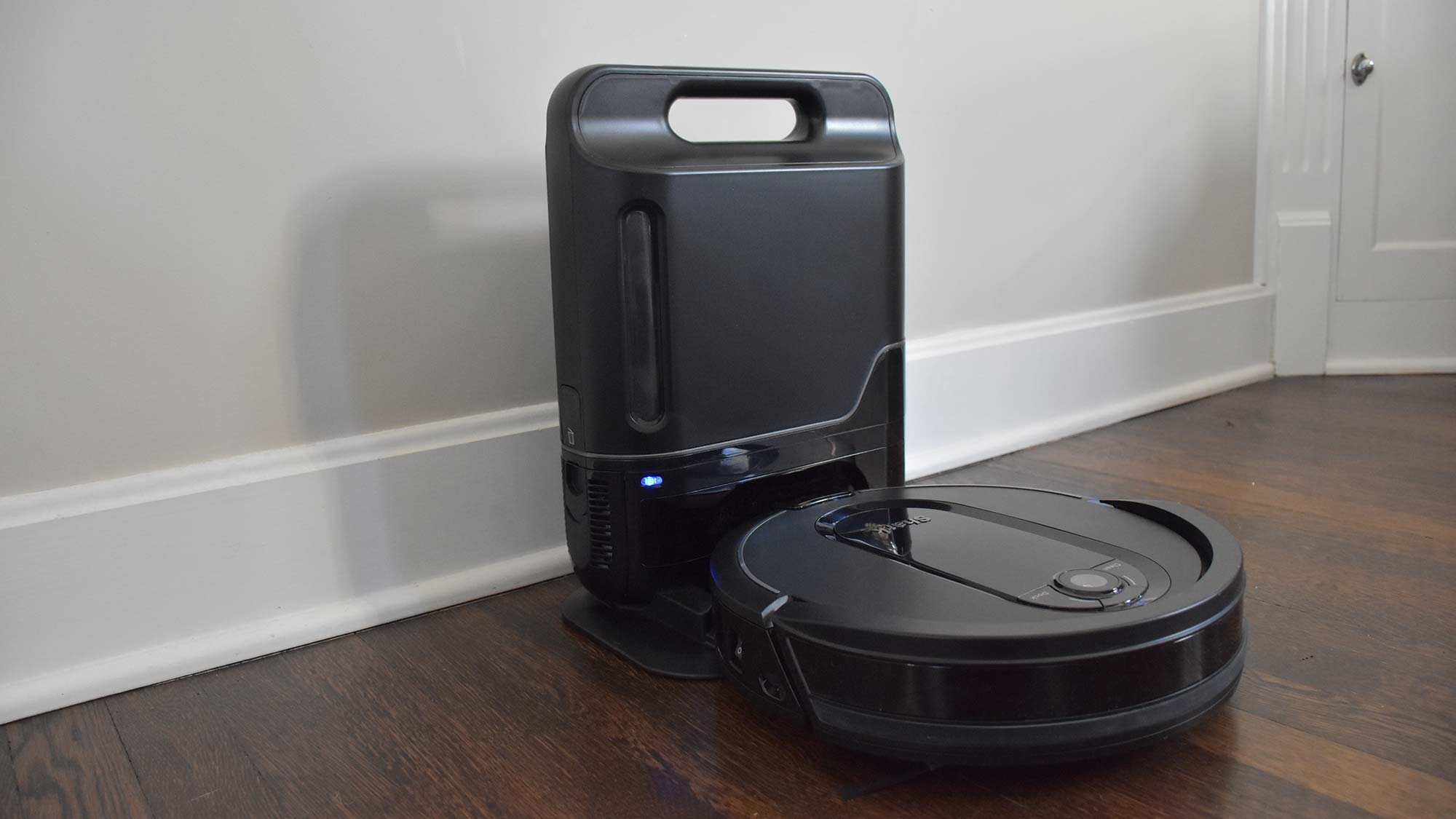Tom's Guide Verdict
The self-emptying Shark IQ R101AE robot vacuum won’t suck up your cash, but it’s not the best cleaner.
Pros
- +
Self-emptying bin is efficient
- +
Premium looks
- +
Snake-like cleaning pattern ensures fuller coverage
Cons
- -
Took three test units to complete floor map
- -
Difficult map creation in app
- -
Lackluster cleaning performance
Why you can trust Tom's Guide
Size: 12.9 x 12.6 x 3.5 inches
Dust cup capacity: 0.17 quarts (with clean base), 0.6 quarts (non-clean base model)
Weight: 13.2 pounds
Smart home compatibility: Alexa, Google Assistant
The Shark IQ R101AE is answering the challenge iRobot threw down when it introduced the Roomba i7+, a robot vacuum capable of emptying its own dustbin. At first glance, the self-emptying version of the Shark IQ would seem to be a winner: at its list price of $599, it’s a bargain compared to the $799 Roomba i7+. But when the best robot vacuums offer solid cleaning performance for less than half that, is this self-emptying bot worth the higher price tag? Read the rest of our Shark IQ review to find out.
Shark IQ review: Price and availability
The Shark IQ RV1001AE is listed at $599, but is currently available for $479 at Amazon. This price includes the self-emptying base. If you want to purchase it without the self-emptying base, the Shark IQ has a list price of $449, and costs $349 on Amazon. However, the model that comes with the self-emptying base has a much smaller dustbin — just 0.17 quarts, versus a 0.6-quart dustbin on the other model. It's also worth checking our Shark promo codes to see if you can save on a purchase direct from the manufacturer.
Shark IQ review: Design
Shark. James Shark. The Shark IQ R101AE is dressed to kill (or clean) with a tasteful mix of glossy black and matte black plastic with brushed silver accents on top. It’s a far cry from the utilitarian shiny grey and black found on the Shark Ion R85 and signals that the company is clearly going for a more premium look. In fact, its design and color more closely resembles the Roomba i7+, right down to the oversized front bumper. The shiny black plastic around the sides of the IQ looked sleek right out of the box, but quickly attracted dust.
At 3.5 inches high, the Shark IQ is slightly shorter than the 3.7-inch iRobot Roomba i7 and a fraction of an inch taller than the Shark Ion R85. The IQ had no problem getting cozy with our kitchen baseboards, though it did get stuck under a low-clearance couch once.
Flipping the Shark IQ over reveals its similarities to the Shark Ion product line. There are large, grippy rubber wheels on either side and a small caster wheel up front. Two single spoke brushes spin on either side of the front of the bot, feeding debris to the brushroll in the center. Several sensors line the front and sides of the bot.
The brushroll on the Shark IQ is a combination of fins and bristles positioned at a slight V-shaped angle. While we’ve seen this combination on other robot vacuums, this one seemed especially prone to getting pet hair stuck around it.
A laser mounted on the top of Shark IQ maps out its surroundings. “Clean” and “Dock” buttons sit on either side while battery and Wi-Fi indicators shine above it.
Get instant access to breaking news, the hottest reviews, great deals and helpful tips.
Shark IQ review: Self-emptying base
We like the size of the Shark’s self-emptying bin and dock a lot. It’s less obtrusive than the Clean Base bin and dock on the iRobot Roomba i7+ and doesn’t look as pretentious sitting on the floor. Where the Roomba required the robot to dock on a piece of plastic that was as large as the vacuum itself, the Shark’s smaller footprint makes it less of a trip hazard. The Shark’s bin is also 3.25 inches shorter than the 19-inch Roomba Clean Base.
Like the Clean Base, the Shark sucks debris upward and into a holding bin. Shark says the bin only needs emptying once a month and there’s a small window into the bin to view its fullness.
The company trumpets that the Shark bin is bagless and is easy to empty. One button near the handle releases the bin from the dock; a second at the base drops the bottom out to release the debris. It’s a process that will feel very familiar to users of Shark’s stick vacuums. The force with which it opens is surprising. Gravity puts most of the debris into the trash can, but a thin puff of dust also flew up into the air. Though it’s annoying that the Roomba base uses small bags that must be purchased from the company (a three-pack costs $17), the bags do keep excess dust to a minimum.
Shark IQ review: Setup
Flip the switch on the Shark IQ R101AE and you’re greeted with a cheery female voice: “Hello. Let’s get cleaning!” But first you have to download the SharkClean app (Android and iOS).
Thankfully, connecting your new robot servant to your smartphone is quick and straightforward. Following the steps within the app it took less than five minutes before we were up and running.
The Shark IQ is a mapping robot vacuum, meaning it will generate a map of one level of your home as it goes about its cleaning business. Once a map is generated, you’re able to name the rooms of your home and then command the bot to clean specific ones. This is great in theory. It should level up Shark to the higher echelon of feature-rich robot vacuums like the iRobot Roomba i7, the Neato Botvac D7 and the Roborock S5 without the eye-popping price tag.
Like I said, it’s good in theory. In reality, I was unable to generate a map of my first floor after more than two dozen mapping runs. A representative from Shark initially told us it could take up to ten runs to generate a map. The generated image of my first floor appeared to show a complete floor plan, but the app said it was only 34% complete. Shark ended up sending two more R101AE’s for us to test. The third robot was the charm. A company representative said an update on the latest iteration minimized mapping time. I found this to be true as the third Shark IQ, which I nicknamed Sharknado 3, completed a map of my first floor in 11 runs.
Once the Shark IQ finishes the mapping process, a completed map is viewable in the SharkClean app. From there, I was able to add and resize rectangles to create room boundaries. The interface is a bit clunky. It’s not possible to zoom in on the map, so fine-tuning room boundaries is tricky. Plus, it assumes that all rooms have four similarly-sized boundaries. My first floor is a mostly open floor plan, but the unique shape of the kitchen area couldn’t be accurately replicated in the app. I had to create two kitchen areas on the map to accommodate it. This isn’t a big deal, but both the iRobot and Neato apps make drawing boundaries easier.
But here’s what is a big deal. After carefully sizing boxes in the app and dutifully naming rooms, the Shark IQ didn’t follow directions. Via the app, I ordered the bot to vacuum the hardwood floor in my bathroom. The Shark IQ left the dock, headed in the correct general direction. Then it bumped into a wall, turned around and began cleaning around the dining room chairs. From there, it took a tour of the kitchen, journeyed directly past the bathroom, then around the living room and back to its dock. I tried it a second time and the same thing happened. The quirks of the Shark IQ are frustrating, to say the least.
Shark IQ review: Performance
Once you send the Shark IQ on a cleaning mission, it goes about its work with gusto. It cleans in a methodical back-and-forth snake pattern, ensuring that no floor area goes unvacuumed. While the IQ was good at negotiating chair legs and tight spaces, it had a tendency to push a little too hard, nudging dog food bowls and a wooden IKEA step stool out of the way. I used the included bot boundary strip to block off a thick shag rug that has felled many a robot vacuum. The IQ pushed hard against the boundary strip, ultimately moving enough of the strip under the rug so that it could travel onto the shag rug, where the vacuum quickly got stuck and sent an alert to our phone.
The Shark IQ has three levels of power (Eco, Normal and Max) but only two cleaning pattern options: manual and mapping. Many other vacuums, including the iLife V3s, include spot and edge cleaning modes that give you more control over the robot’s movements.
While we were unable to test the Shark IQ in the same lab environment as older robot vacuums, we replicated those conditions as best we could in a house. We cordoned off a 5 x 5-foot area and performed three tests on hardwood and three on low-pile carpet. On both surfaces, we dropped 20 grams of Cheerios, then 20 grams of kitty litter and then 2 grams of dog hair in relatively straight lines. We then placed the Shark IQ about one foot away from the debris and pressed the “Clean” button.
The Shark IQ picked up an average of 77.5% of the kitty litter; by comparison, the Roomba s9, which we tested in the same location, was a perfect 100%, and the older Shark Ion picked up 94%.
On our Cheerios test, the Shark IQ again fell to the bottom, collecting an average of just 67.5%of the Cheerios in our test, well below the Shark Ion Robot’s perfect score and the s9’s (92.5%).
When it came to picking up dog hair, the IQ wrapped most of it around the brushroll and castor wheel axles. It disposed of 66.5% of the dog hair, a poor showing compared to the 98% picked up the by the s9. Even the Shark Ion R85 picked up 88%of dog hair.
The Shark IQ cleaned relatively quickly, especially on carpet. It picked up 80 percent of the kitty litter on carpet in just 5 minutes, but the Roomba s9 was slightly faster at 3 minutes, 18 seconds. It also bested the s9 by about 3 minutes when picking up Cheerios on carpet, completing the task in 11 minutes and 16 seconds.
On hardwood, the Shark IQ wasn’t quite as speedy, taking 17 minutes and 11 seconds to vacuum up the cereal. The Roomba s9 was extra quick on hardwood, completing the same task in just under 4 minutes.
One helpful feature of the Shark IQ is that it will return to the dock when it senses that its onboard dustbin is full, empty itself and then get back to vacuuming. It’s incredibly handy and I was grateful that the vacuum took care of itself.
Shark IQ review: Noise levels
As soon as the Shark IQ got to work, I noticed it sounded different. Unlike the continuous din of a robot vacuum going about its business, the first IQ unit I tested sounded like something was coming loose. I got used to the sound, but it’s definitely off-putting. Other reviewers have called out the design of the brushroll as the root cause. I noticed that the third iteration of the IQ was much quieter than the first. Using the app Decibel X, the Shark IQ registered 68.4 decibels, quieter than the Roomba s9’s 72 decibel measurement.
The self-emptying bin is also loud when sucking debris out of the vacuum. It’s a big whoosh that’s surprising at first, but it’s a shorter duration and less earth-shaking than the Roomba Clean Base.
Shark IQ review: Verdict
I really wanted to be wowed by the Shark IQ and its self-emptying bin. For $599, it's a significantly less expensive alternative to the $799 iRobot Roomba i7+ , but it’s still twice the price of its better performing sibling, the Shark Ion R85 ($300). And, the fact that it took Shark sending us three models to finally get one that mapped our house correctly—and even that one had trouble following directions—doesn’t lend much confidence. Unfortunately, the IQ’s performance doesn’t justify its price. While the self-emptying bin is the real highlight here and incredibly useful, I wish Shark had put more effort into the rest of this robot vacuum.
Meghan McDonough is a journalist who currently tests and writes about robot vacuums. Since 2008, she’s written about laptops, mobile phones, headphones, speakers, and other consumer tech. When she sees an unfamiliar device, Meghan has a habit of asking complete strangers, “What is that? Does it work well for you?”
In her spare time, Meghan enjoys seeing live music, tending to her garden, and playing endless games of fetch with her Goldendoodle, Duke of Squirrel.
